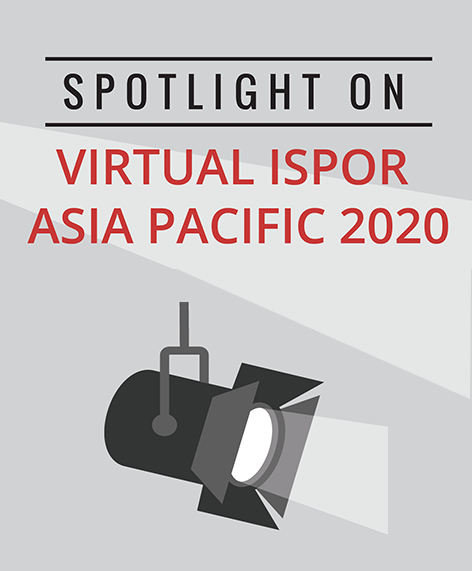Innovative Approaches to Pricing, Value Assessment, and Patient Access to High-Cost Interventions
Aakash Bipin Gandhi, BPharm, Department of Pharmaceutical Health Services Research, University of Maryland, Baltimore, MD, USA; Vasco Pontinha, MPharm, MA, Department of Pharmacotherapy and Health Outcomes, Virginia Commonwealth University School of Pharmacy, Richmond, VA, USA
“Therapeutic advances in medicine are accompanied by rising costs for both patients and payers and represent an affordability challenge for healthcare systems worldwide.” With that, Diane Munch, MA, Pfizer, Inc, New York, NY, USA, opened an exciting session that discussed how countries in the Asia Pacific region approach pricing and value assessment for high-cost drugs in order to ensure that they remain accessible to patients. The spectrum of innovative solutions to meet patient affordability challenges include, but are not limited to, implementing risk-sharing, financial incentive, and performance-based agreement frameworks. [Figure 1] The solutions are especially required for drugs in therapeutic areas such as cancer and rare diseases that have a high unmet need.
Figure 1. Spectrum of Innovative Pay Solutions

Balancing Patient Need With Treatment Cost
Sarah Fitt, BPharm, Pharmaceutical Management Agency, Wellington, New Zealand walked us through the process of health technology assessment (HTA) submissions in New Zealand. “Healthcare needs will always exceed limited resource availability within a healthcare system and hence important choices need to be made.” Since 2008, the Pharmaceutical Management Agency, better known as PHARMAC, has managed to deliver savings amounting to about $NZ6.89 billion for the healthcare system, while ensuring adequate supplies to an increasing demand for medicines. These savings were achieved keeping in mind key factors such as patient costs and savings, drug need or suitability, and health benefits for the population. Dr Fitt highlighted that increasing prices associated with new medications, heightened patient expectations surrounding new drugs due to information being readily available on the internet, and the need for increasing transparency remain key challenges in advancing the current state of HTA submissions in the country. To handle some of these challenges, PHARMAC maintains a priority list of drugs that are ranked for approval based on factors such as budget availability and patient needs.
“Healthcare needs will always exceed limited resource availability within a healthcare system and hence important choices need to be made.” —Sarah Fitt, BPharm
Using a Feedback Loop to Address Budget Caps
The development of risk-sharing agreements in Korea to ensure access to high-cost drugs was discussed by Jeonghoon Ahn, PhD, Ewha Womans University, Seoul, Republic of South Korea. Korean risk-sharing agreements are limited to drugs that meet certain eligibility criteria such as being nonsubstitutable drugs that are indicated for cancer or life-threatening rare diseases. Traditionally, the country has utilized pay-for-performance agreements for prior drug approvals based on maximum budget caps. However, Dr Ahn argued, “these can restrict the available healthcare budget, especially if pricing is tied to international reference pricing.” Hence, risk-sharing agreements may serve as a solution to address this limitation. In this system, a feedback loop can be put in place in which continuous assessments are conducted using real-world evidence collected in Korea. This can then be compared to the data in the original dossier to resolve any discrepancies.
Shanlian Hu, MD, MSc, Fudan University, Shanghai, China, added that, as a monopsonist market, China follows essentially 2 approaches for setting drug prices. These include “price negotiation” for exclusive drugs and “price competition,” as well as “state centralized procurement,” for nonexclusive drugs such as generics. Dr Hu mentioned that the Korean model could be implemented in China and that adopting risk-sharing agreements and coverage decisions could be encouraged in the future.
Evidence Needs to Support Patient Access to Novel Therapies
Universal healthcare coverage is not always synonymous with automatic access to innovative drugs. Netnapis Suchonwanich, Health Intervention and Technology Assessment Program, Bangkok, Thailand, argued that even though Thailand has had universal healthcare coverage since 2002, access to novel drugs is challenging due to their rising costs. Thailand is continuing to move from a “price-only” model to a “price performance model” when approving innovative and expensive drugs. This means that both the price, as well as the efficacy of drugs, would be considered during any HTA submissions. The country has even developed an e-bidding system for manufacturers to execute the same.
“There is a need for creative thinking on the part of manufacturers and payers to improve patient access to drugs amid tight budget constraints, which is especially complicated by the COVID-19 pandemic.”
—Diane Munch, MA
In the end, it seems that creative solutions that payers or manufacturers are willing to develop would benefit from the inclusion of real-world evidence that requires fundamental infrastructure to handle large data sources.
Figure 2. Session speakers.

